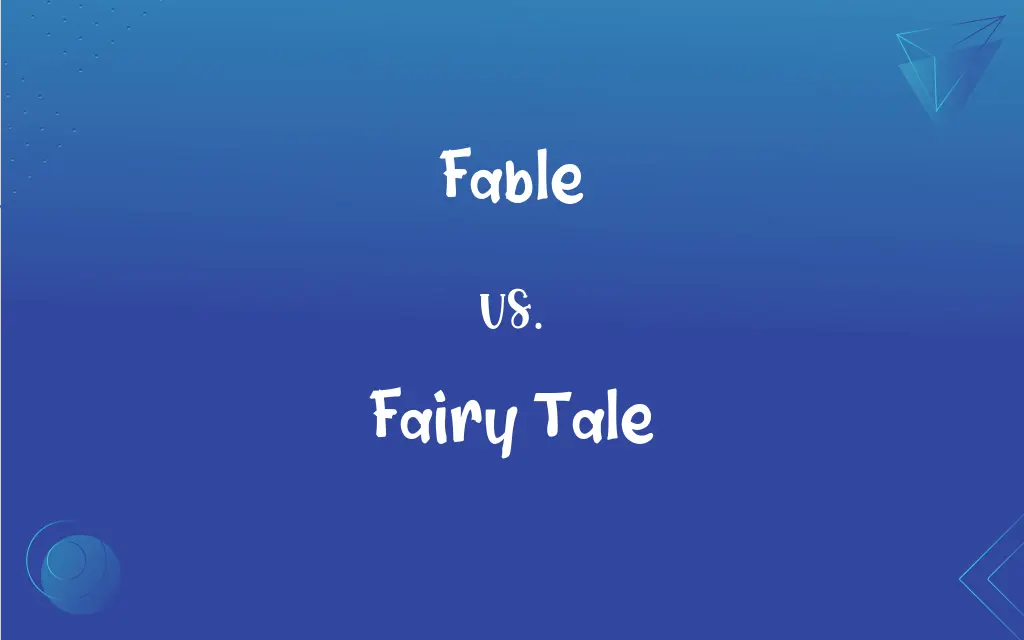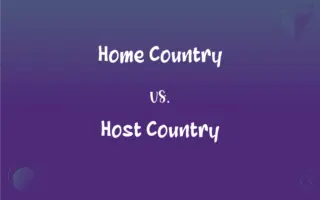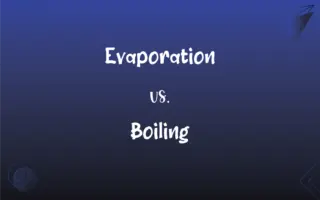Fable vs. Fairy Tale: What's the Difference?
Edited by Aimie Carlson || By Harlon Moss || Updated on October 17, 2023
A fable is a short story, often featuring animals, conveying a moral; a fairy tale is a fantastical story with magical elements, often aimed at children.

Key Differences
A fable is a succinct narrative, typically featuring animals, plants, inanimate objects, or forces of nature which are anthropomorphized (given human qualities). These stories are designed to convey a lesson or moral to the reader or listener. Aesop’s fables, like “The Tortoise and the Hare,” are classic examples where animals display human behaviors to teach valuable life lessons.
In contrast, a fairy tale is a fictional story that may involve magic, mythical creatures, and extraordinary events. These tales are often geared towards children, providing not only entertainment but sometimes lessons, albeit in a less direct manner than fables. Think of stories like “Cinderella” or “Snow White,” where magic plays a key role and good typically triumphs over evil.
It's important to note that while both fables and fairy tales can teach morals, the manner in which they do so differs. Fables are straightforward in their approach, using clear characters and situations to convey a message. Fairy tales, on the other hand, delve into the world of fantasy, often with more complex storylines and characters, and their morals might be more implicit.
Moreover, while fables tend to stay short and to the point, fairy tales can range from short narratives to lengthier, intricate tales. Fables largely rely on the intelligence or folly of their characters to drive the lesson home, whereas fairy tales often use enchantment, challenges, and magical outcomes to engage the reader.
Lastly, the settings in which fables and fairy tales are placed can differ considerably. Fables might feel closer to reality, despite their anthropomorphic characters, while fairy tales are set in magical lands, distant kingdoms, or enchanted forests, providing an escape from the mundane.
ADVERTISEMENT
Comparison Chart
Primary Purpose
Convey a moral or lesson.
Entertain with elements of magic and fantasy.
Characters
Often animals with human characteristics.
Humans, magical creatures, talking animals.
Setting
Closer to reality, simple settings.
Magical lands, enchanted forests, distant kingdoms.
Length
Typically short and to the point.
Can range from short to long narratives.
Historical Examples
Aesop's fables (e.g., "The Ant and the Grasshopper").
Grimm's tales (e.g., "Little Red Riding Hood").
ADVERTISEMENT
Fable and Fairy Tale Definitions
Fable
A brief story illustrating a moral, often with animals acting as humans.
The fable of the lion and the mouse teaches about gratitude.
Fairy Tale
A tale that might be grounded in history but has been embellished with supernatural elements.
Over time, true events can become the stuff of fairy tales.
Fable
A fictional tale that provides ethical instruction.
Aesop's fables have been shared for generations to teach morals.
Fairy Tale
A legendary story that may convey a moral but emphasizes enchantment.
Many consider Cinderella a fairy tale about kindness and resilience.
Fable
A narrative, usually employing non-human characters, to represent human follies or truths.
In the fable, the wind and the sun compete to remove a man's coat.
Fairy Tale
A narrative that delves into imaginary realms, usually featuring witches, goblins, or fairies.
In the fairy tale, a young girl visits a world through a looking glass.
Fable
A cautionary tale that uses simple situations to convey complex lessons.
The fable about the boy who cried wolf warns against dishonesty.
Fairy Tale
An often intricate story that weaves in magic, heroes, and challenges.
The fairy tale depicted a brave knight saving a kingdom from a dragon.
Fable
A story, often legendary in nature, that seeks to explain or contextualize something in the real world.
Ancient civilizations used fables to explain natural phenomena.
Fairy Tale
A story involving magical elements and fantastical events, often meant for children.
The fairy tale of Sleeping Beauty involves a curse and a magical kiss.
Fable
A usually short narrative making an edifying or cautionary point and often employing as characters animals that speak and act like humans.
Fable
A story about legendary persons and exploits.
FAQs
What is a fable?
A fable is a short story, often featuring animals, that conveys a moral lesson.
How does a fairy tale differ from a fable?
A fairy tale is a fantastical story with magical elements, often aimed at children, while a fable teaches a moral using anthropomorphic characters.
Is there always a lesson in a fable?
Fables are generally designed to convey a moral or teach a lesson.
Are all fables short?
While fables tend to be brief, their primary objective is to convey a lesson, regardless of length.
Why are animals commonly used in fables?
Animals in fables can effectively represent human behaviors and characteristics without targeting a specific human group or individual.
Are the morals in fairy tales as explicit as in fables?
Often, the morals in fairy tales are more implicit, while fables are direct in their moral instruction.
Can fables be humorous?
Yes, while fables aim to teach, they can employ humor to make the lesson engaging.
Do fairy tales originate from specific cultures?
Fairy tales can be found in various cultures, each with its unique stories, characters, and lessons.
Is "Hansel and Gretel" a fable or a fairy tale?
"Hansel and Gretel" is a fairy tale, characterized by its magical elements and enchanting narrative.
Why are fairy tales popular for bedtime stories?
Their magical, enchanting nature makes fairy tales captivating, offering an escape from reality before sleep.
Are fairy tales always set in distant lands?
While many fairy tales are set in fantastical places, they can also be set in familiar or everyday settings with magical elements intertwined.
Are fables factual?
No, fables are fictional tales with the purpose of conveying morals.
Can a fable be set in a modern context?
Absolutely, while traditional fables are ancient, modern fables can address contemporary issues or morals.
What's the primary audience for fairy tales?
Fairy tales are often aimed at children but can be enjoyed by readers and listeners of all ages.
Do fairy tales always involve fairies?
No, fairy tales can involve various magical creatures, enchanted objects, or even ordinary humans in magical situations.
Who is a famous author of fables?
Aesop is a renowned ancient Greek storyteller known for his fables.
Can fairy tales be dark or scary?
Yes, some fairy tales, especially older versions, can have dark themes or cautionary elements.
Are there modern fairy tales?
Yes, while many fairy tales are ancient, new ones are continually being written, often with modern themes and settings.
Do fables only use animals as characters?
While animals are common in fables, inanimate objects or forces of nature can also be anthropomorphized.
Are the lessons in fables universally accepted?
While many fable morals are universal, interpretation can vary based on culture, personal beliefs, and individual understanding.
About Author
Written by
Harlon MossHarlon is a seasoned quality moderator and accomplished content writer for Difference Wiki. An alumnus of the prestigious University of California, he earned his degree in Computer Science. Leveraging his academic background, Harlon brings a meticulous and informed perspective to his work, ensuring content accuracy and excellence.
Edited by
Aimie CarlsonAimie Carlson, holding a master's degree in English literature, is a fervent English language enthusiast. She lends her writing talents to Difference Wiki, a prominent website that specializes in comparisons, offering readers insightful analyses that both captivate and inform.































































